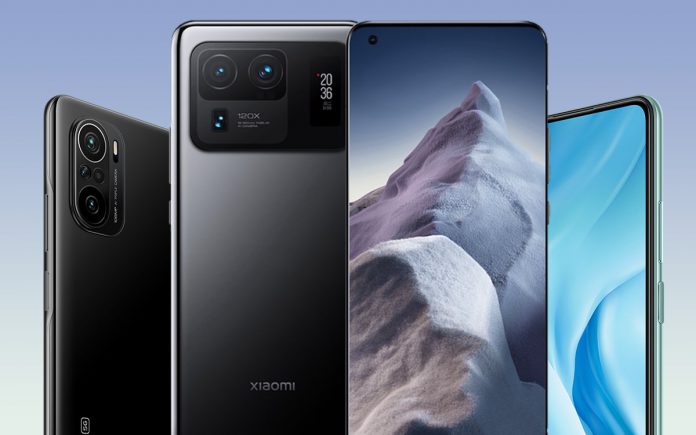Xiaomi has just officialized three new smartphones, the Mi 11 Ultra, 11i and 11 Lite. The brand responds with great ambition to the photo progress of other flagships like the Galaxy S21, while offering other cheaper entry points to reach as many people as possible.
After unveiling the Xiaomi Mi 11 in December, the brand returns this Monday, March 29, 2021 with three additional members of the Mi 11 range. The most advanced flagship, the Mi 11 Ultra, packs the most advanced photo sensors on a Xiaomi smartphone to date. The photo module at the back is very large. It features a triple photo sensor including an ultra-wide 50MP (Samsung GN2) main sensor .)
This sensor can combine four pixels into a single 2.8 m,for incredibly bright photos, even at night. Added to this is a 5x optical zoom perspiclity lens, as well as 10x hybrid zoom and 120x digital zoom and an ultra wide angle 128-48 MP (Sony IMX586). In addition to exceptional photos, the set allows therecording of 8K videos as the best competing flagships on the market,notably the S21.
The screen (curved on this model) is not left out, since this AMOLED slab delivers 1.07 billion colors, with both support for HDR HDR10 technologies and Dolby Vision, all with a refresh rate of 120 Hz and the definition WQHD. The huge rear photo module also features a 1.1″ AMOLED display that doubles as a permanent display, notification window, selfie preview screen and more.
The Xiaomi Mi 11 Ultra features a Snapdragon 888, the latest generation available, and the set is powered by a generous 5000 mAh battery compatible with 67W fast charging (100% in 36 minutes).
The small surprise is the new model 11i. If we do not really know yet if the “i” has any meaning, on this smartphone it is the brand of equivalent raw performance, while ignoring the functions too premium. A strategy that is reminiscent of the approach of the first Pocophone, and this bet allows Xiaomi to make this smartphone very interesting for a global price starting at only 649 euros.
Again we have a Snapdragon 888, and an exceptional AMOLED (flat) display of both 120 Hz and HDR10 compatible and Dolby Vision. The photo/video part does what Xiaomi could do best a notch below. Rather than offering the 8K, the set of sensors pulls the definition of photos – and the taking of low-light shots – upwards.
We have a 108 Mp main sensor with technology that combines adjacent pixels into a single 2.1 m,all with Dual Native ISO technology that allows for more detail in contrasting images. This main sensor comes with a wide angle 119 degrees. Quite rare on a Xiaomi smartphone, the device offers Dolby Atmos compatible stereo speakers.
The set features a generous 4520 mAh battery compatible with a 33W fast charging system (necessarily a little less efficient than the Ultra model).
Less upscale with an international price starting at 369 euros (5G version) and 299 euros (4G) the Mi 11 Lite 5G and Mi 11 Lite play on a finer and physically lighter design with only 159g and 6.81 mm thick. The photo part is necessarily a notch below, but Xiaomi is again trying to put the best components possible. So we have a 64 MP main sensor with “one-click AI cinema modes.”
This one is backed by an ultra wide angle 8 MP, and a telemacro 5 Mp sensor that may be a bit fair compared to what is done on the highest end – but that should be enough for most users. On the screen side, we have a 20-megapixel selfie sensor. The screen remains AMOLED as on other models but with a native refresh rate 90 Hz, and the only compatibility with HDR10. However the smartphone shares some interesting features with the Mi 11i.
For example, it also carries a pair of stereo speakers. Following this announcement, we are still waiting for information specific to France, including the exact price of all smartphones and variants, as well as their availability date. What’s your favorite model? Share your thoughts in the comments!










